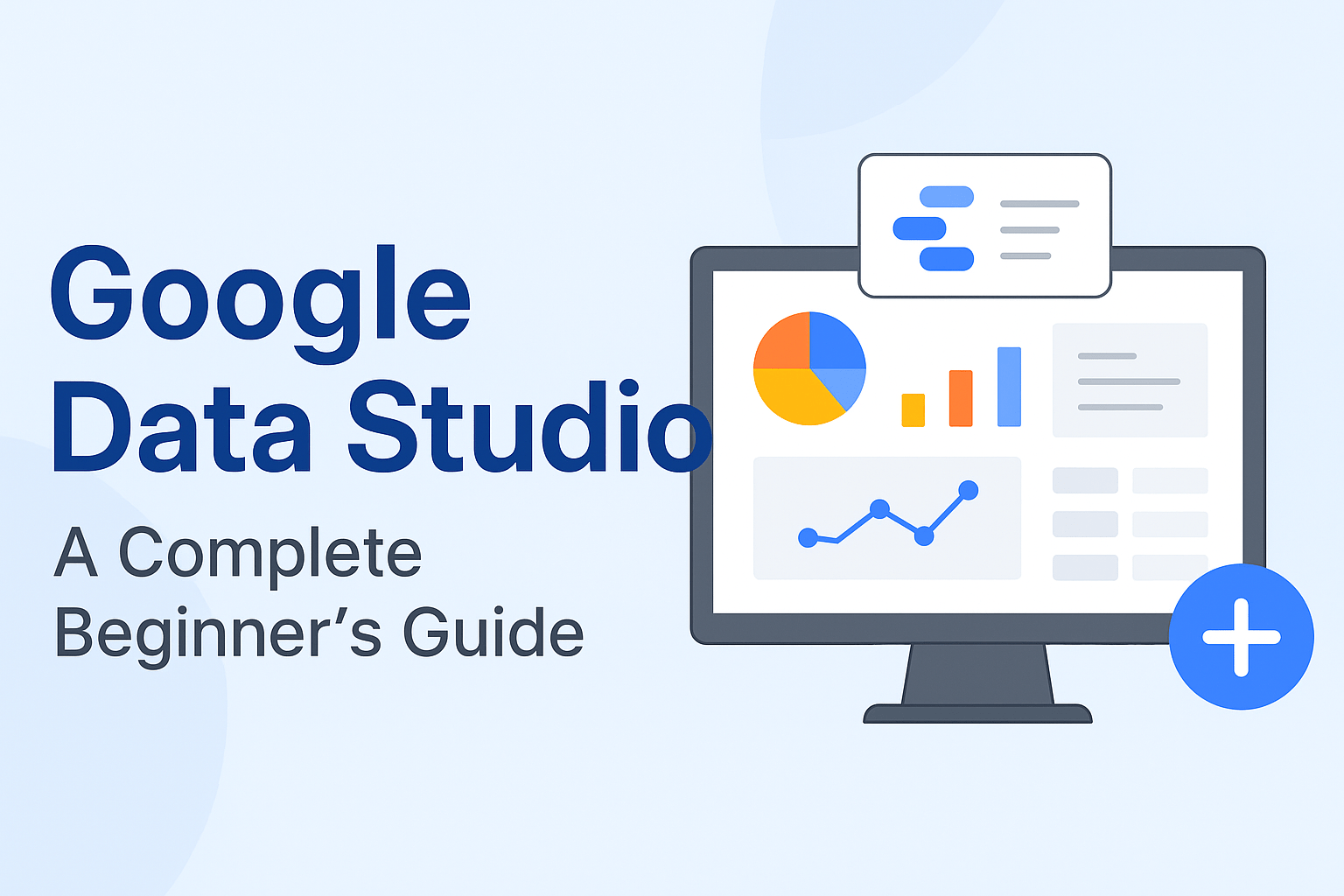In today’s digital age, data is everywhere. But data in its raw form can feel overwhelming—rows upon rows of numbers, percentages, and metrics. That’s where Google Data Studio comes in. It takes the heavy lifting out of data analysis by transforming complex data into clear, interactive, and visually appealing dashboards.
Whether you’re a student trying to analyze survey results, an entrepreneur tracking sales, or a professional presenting reports to your boss, Google Data Studio can help you tell stories with your data. Let’s break it down step by step.
Also Read: The Ultimate Guide to Google Ads
What is Google Data Studio?
Google Data Studio (often shortened as GDS) is a free business intelligence (BI) tool developed by Google. It allows users to:
- Connect to various data sources (Google Analytics, Google Sheets, Google Ads, BigQuery, YouTube, Facebook Ads, and more).
- Build interactive dashboards.
- Share insights with teams or clients in real-time.
Think of it as Google’s answer to turning raw data into meaningful visuals—like charts, graphs, and interactive reports—that anyone can understand at a glance.
Also Read: How to Analyze Survey Data: Step-by-Step
Key Features of Google Data Studio
- Multiple Data Connections
With GDS, you can connect to dozens of data sources—both Google-owned and third-party tools. No more downloading CSVs every week. - Drag-and-Drop Interface
Even if you have zero coding or design background, you can build professional dashboards in minutes. - Interactive Reports
Add filters, date ranges, and clickable elements to give users control over what they see. - Real-Time Data
Reports update automatically whenever the connected data sources refresh. - Collaboration Made Easy
Just like Google Docs, you can invite others to view or edit dashboards.
Why Use Google Data Studio?
Imagine this: You’re preparing a report for your boss. Instead of emailing a 20-slide PowerPoint deck filled with static numbers, you send a single interactive dashboard link. Your boss can filter, click, and analyze in real-time without asking you for updates.
That’s the power of GDS—it saves time, improves collaboration, and makes data more actionable.
How to Get Started with Google Data Studio
Here’s a quick beginner-friendly roadmap:
- Sign In
Head over to Google Data Studio and sign in with your Google account. - Choose a Data Source
Example: Google Sheets, Google Analytics, or even CSV uploads. - Create Your First Report
Select a template or start from scratch. Drag charts, scorecards, and tables onto your blank canvas. - Customize the Layout
Change fonts, colors, and designs to match your personal or brand style. - Add Filters and Date Ranges
Make your dashboard dynamic so viewers can adjust the data themselves. - Share with Your Audience
Just click the share button, set permissions, and send the link.
Pros of Google Data Studio
✅ Free to use – Unlike many BI tools, GDS doesn’t cost a cent.
✅ Easy integration – Connects smoothly with Google products.
✅ User-friendly – Simple drag-and-drop interface.
✅ Collaboration – Share and co-edit in real time.
✅ Customizable – Highly flexible with templates, branding, and filters.
Cons of Google Data Studio
❌ Learning curve – Beginners may need time to understand advanced features.
❌ Limited storage – Some data sources require external connectors.
❌ Performance issues – Reports with huge data sets can get slow.
❌ Dependency on Google ecosystem – Works best if most of your tools are already Google-based.
Real-Life Uses of Google Data Studio
- Students – Visualize research or project data.
- Entrepreneurs – Track sales, leads, and marketing campaigns.
- Professionals – Build KPI dashboards for teams.
- Content Creators – Monitor YouTube or website analytics.
Final Thoughts
Google Data Studio is like having a data storytelling assistant at your fingertips. It turns complex spreadsheets into meaningful insights—without requiring a background in coding or design.
If you’re looking to level up your data analysis skills or make your reports more engaging, give GDS a try. It’s free, powerful, and designed to make your data come alive.



Leave a Reply